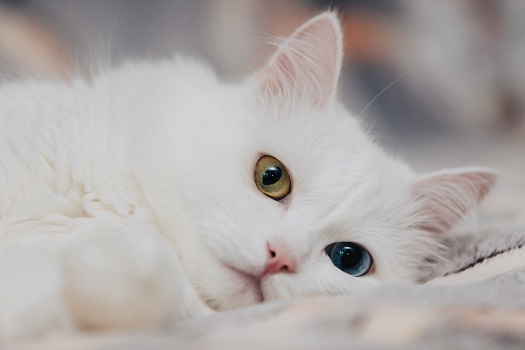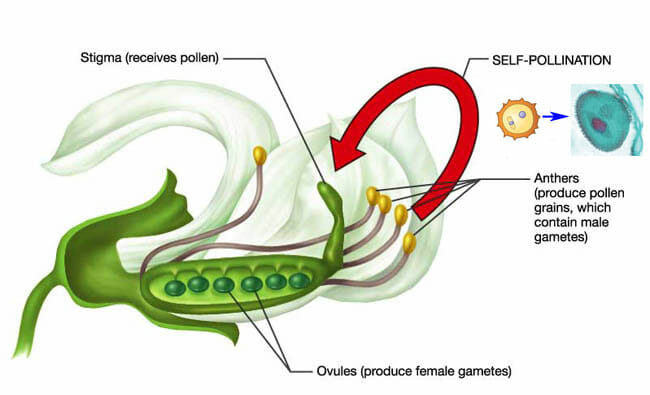Definition
True breeding organisms are those that can transit certain traits to all their offspring. True breeding organisms appear to be similar to each other in appearance, respond similarly to the environment and are homogenous for many characteristics that differentiate them from other members of the same species.

For instance, all Bulldogs have thick folds of skin over their brows, an obvious ‘underbite’ where the lower jaw projects in front of the upper jaw, and short tails. They are considered true breeding for these physical characteristics.
In plants, the commonly used example is the pea plant used by Mendel for his initial experiments in genetics. These plants underwent self-fertilization and therefore, over many generations had become homozygous at most genetic loci. Some others are those that have been created by genetic modification, such as the ‘golden rice’ variety that has been selected for its ability to produce high levels of beta carotene.
Examples of True Breeding
There are examples of true breeding organisms in both the plant and animal kingdom. Some of these arise naturally, while humans have created many to concentrate certain desirable traits.
Animals
Angora cats (derived from the name of the Turkish town, Ankara) are known for their long, silky coats that come predominantly in white color. They are also distinguished by their long, pointy ears and almond-shaped eyes. When Angora cats breed amongst each other, they pass on these characteristics to all their offspring and breed true for eye and ear shape and coat morphology. Persian cats were also similarly bred for their long coats. Among dogs, breeds like the Dachshund are known for having short legs, long bodies and the temperament and physiology for hunting. They have an enhanced nose area to sniff scents and loose skin that allows them to chase small animals down burrows.
Farm animals such as cows and horses have also been selectively bred to give rise to true breeds. The Arabian horse is one of the oldest breeds developed by humans and mentioned in many ancient texts for its speed, endurance, intelligence and suitability as a war horse. It is also noted for its aesthetic appearance with a high tail and proportionate hips and shoulders. In comparison, breeds such as the Clydesdale are draft horses meant for heavy farm labor and for drawing carts. They were selectively bred for strength and a docile temperament, without any emphasis on speed.
Self-Fertilizing Plants
Gregor Mendel was able to conduct his experiments in genetics because he had an excellent model organism in the form of the common pea plant or Pisum sativum. These plants contain flowers that open only after fertilization, and therefore, all of them undergo self-fertilization, where the pollen from the anthers falls on the stigma of the same flower.

Mendel had many different types of pea plants, each carrying a distinct set of characteristics. For instance, there were plants with green or yellow seeds, others that were tall while some were short, and some had a smooth seed coat when compared to those whose coat was wrinkled. A tall plant whose seeds were yellow and smooth would always give rise to offspring with the same characteristics. Similarly, plants whose flowers were purple would always give rise to generations of plants whose flowers were purple, in the absence of any external intervention. When Mendel was convinced about the true breeding nature of these plants, he proceeded to conduct experiments to understand the physical nature of genetic material.
Other True Breeding Plants
The common pea plant is an example of an organism that undergoes sexual reproduction but continues to produce true breeding offspring. The plant kingdom also contains species that predominantly use asexual reproduction and therefore automatically produce clonal offspring. Common among these are members of the Allium genus, which include onion and garlic. Others use variations of asexual reproduction, where seeds are created from unfertilized ovules or cells of the embryo sac. This is seen in many plants of the citrus variety.
Types of True Breeding
True breeding diploid organisms are usually homozygous for a particular trait. This means that Mendel’s pea plants had identical alleles for each trait that he observed. The plants that had purple flowers had the same gene on both chromosomes coding for flower color. Similarly, plants that had yellow seeds had the dominant allele on both chromosomes. Additionally, the phenotypes were determined by a single gene, which helped in interpreting the results of his experiments. That is, unlike humans, the height of the pea plant is determined by a single gene locus; the tall plants Mendel observed had two copies of the same allele. However, even multi-gene attributes can be passed on through extensive inbreeding. For instance, Siamese cats always produce offspring with the defining characteristics of the breed because they were inbred till they were homozygous for all the relevant genes, such as those that influence face shape, or coat quality. Once the breed is established, they are often preferentially mated with others who have a similar genetic composition so that their offspring also breed true.
Mendel’s pea plants were self-pollinating as well, which is similar to inbreeding in animals. This is common in the plant kingdom, with over 10% of flowering plants choosing self-pollination over cross-pollination. Other examples include many orchids and the common model organism in botany laboratories, Arabidopsis thaliana. The mechanisms used can include the ‘melting’ of the anther so that pollen contacts the surface of the stigma, movement of the anther so that it literally falls into the stigma or through oily emulsions that flow from one part of the flower to another carrying pollen. In the animal kingdom, self-fertilization is seen in hermaphrodites, where species like the banana slug contain both reproductive organs, and in the absence of viable partners, can fertilize the female gamete from the sperm of the same animal. Another model organism, a free-living round worm called Caenorhabditis elegans, is also known to primarily follow self-fertilization.
True breeding can also be propagated in the absence of a homozygous condition, when types of asexual reproduction are followed. Apomixis is one common method, where a seed develops from an unfertilized ovule or from the cells surrounding the ovum. Mangifer indica or the Mango plant uses a form of apomixis. Similarly, parthenogenesis has been observed in the animal kingdom, where a new organism develops from an unfertilized egg.
Functions of True Breeding
True breeding occurs in nature when a particular trait is crucial for survival in a certain environment and therefore it outweighs the cost of losing genetic variability. It can also occur as a side effect of many years of self-pollination or self-fertilization due constraints in undergoing normal sexual reproduction.
In agriculture or animal husbandry, some traits such as milk production in cows or egg laying capacity in chickens are selectively bred to increase the impact of these advantageous traits. Horses that breed true for high load carrying capacity are also preferred when there is heavy farm labor to be accomplished.
In domestic animals and plants, aesthetics plays an important role in establishing true breeding organisms. The various varieties of cats that were developed in Europe in the late 19th and 20th century are testament to this. Some dogs are selectively bred for their ability to be assistants to the police (sniffer dogs), as helper dogs, as hunters and so on. Some others are preferred for their convenience and their reputation for being docile creatures.
Limitations of True Breeding
True breeding comes with a number of limitations, most of which stem from a lack of genetic variation. Many true breeding specimens are susceptible to disease and can suffer from a number of crippling illnesses as they grow older including bone and blood disorders. In addition, many traits may appear to breed true, such the temperament for being good guard dogs, but any characteristic that is multi-genic or influenced by the environment can show variation.
Related Biology Terms
- Anther – Part of the plant’s male reproductive organ that contains pollen
- Landrace – Traditional variety of animal or plant that has evolved over a long time through adaptation to local conditions and reproductive isolation from other populations.
- Ovule – The structure that gives rise to and maintains the egg cell in plants.
- Stigma – The top part of the female reproductive organ in flowering plants that receives pollen.
Quiz
1. Which of these are characteristics of all true breeding organisms?
A. Homozygous at all genetic loci
B. Self-fertilizing
C. Developed through human intervention
D. Pass on their characteristics to all their offspring
2. Which of these is a reason for plants preferring self-pollination?
A. Unavailability of pollinating agents
B. Proximity of male and female reproductive organs in the same flower
C. Genetic robustness
D. All of the above
3. What is the term for a form of asexual reproduction where the seed develops from an unfertilized ovule?
A. Parthanogenesis
B. Apomixis
C. Inbreeding
D. None of the above
